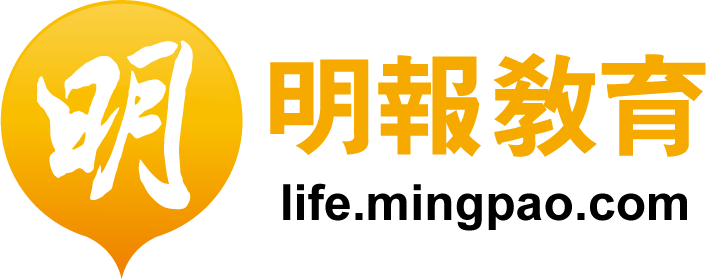雙語社評齊齊聽
【明報專訊】HONG KONG'S rail network has been playing a leading role in our transport system. The Railway Development Strategy 2014 (the New Strategy) is set to further strengthen its dominance. What should be done to prevent other transport facilities from being pushed further out of the way? The comprehensive transport framework in place today was formulated seventeen years ago. Since then the rail network has changed the aspect of Hong Kong's transport system, forcing other public transport facilities (such as buses, minibuses and taxies) to play second fiddle to it. However, problems have arisen as the strategy has not been adjusted in the light of changes that have taken place. The government should conduct the fourth comprehensive transport study as soon as possible. It should put forward a new transport framework so that society's needs which changes may bring about can be met.
《鐵路發展策略2014》進一步強化鐵路交通的主導地位,其他公共交通工具的營運空間,如何避免再被擠壓?現行整體運輸策略在17年前研究制定,這些年來,鐵路已經改變了本港的交通面貌,巴士、小巴、的士等公共交通工具的角色和作用,已經淪為配角。不過,整體運輸策略未作相應調整,落後於格局變化,也衍生一些問題。政府應該盡快做第四次整體運輸研究,提出新策略綱領,以應對變化帶來的需要。
Rail transport currently enjoys a 40% plus share of the city's public transport market. It will rise above 50% when six of the rail lines envisaged in the New Strategy are completed. The rail system's dominance will then be more firmly entrenched. Other modes of transport will be affected. Bus ridership has kept shrinking. KMB, which has the most bus passengers, has seen its ridership drop from 3.1 million a day in 2002 to 2.6 million a day now. Operators of minibuses (public light buses and green minibuses) have been complaining about bad business for a few years. The premium of a minibus licence has declined around 30% from the 2011 high of $7.5 million, which shows investors are bearish about the industry. As taxies play a feeder role, it is possible for taxi operators to survive. But it is a fact that they now earn much less than they did. The overall picture of Hong Kong's public transport system today is one in which the rail system assumes dominance, bus and minibus operators face dwindling business volumes, and taxi operators manage to remain afloat.
現在,鐵路運輸在整體公交市佔率已經超過四成,新策略6條線路完成後,市佔率將逾五成,鐵路的壟斷地位更為牢固。其他公交工具,巴士乘客持續萎縮,載客量最多的九巴,2002年每日載客310萬人次,現在減少至約260萬人次;小巴(包括紅色小巴與專線小巴)業者數年前開始訴說經營困難,小巴牌價由2011年高峰時的750萬元,已經持續下跌約三成,反映投資者不看好小巴營運前景;的士的輔助接駁功能,雖然有一定存在空間,但是業界收入大不如前,也是事實。因此,鐵路一枝獨秀,巴士與小巴業務萎縮,的士營運尚可維持,是目前公交體系的寫照。
The government's transport policy is still based on the transport framework formulated 17 years ago, which is clearly out of step with society's real needs as public transport has taken on a new aspect. The comprehensive transport framework in place today was formulated by a consultancy commissioned by the government in August 1997. Let us consider the scale of the rail system - there were only three rail lines in operation back then, namely the Kwun Tong Line, the Tsuen Wan Line and the Island Line. The Tung Chung Line, the Tseung Kwan O Line, the Kowloon Southern Link, the West Rail Line, the Ma On Shan Line and the Disneyland Resort Line came into operation after the study had been completed. When the five rail lines now under construction are completed, Hong Kong's rail network will cover areas inhabited by about 70% of the total population. The rail system will become even more important at the expense of other public transport facilities.
政府仍按17年前研究制定的策略綱領,處理整體運輸事宜。由於交通格局已經起了變化,這個綱領明顯與實際需要脫節。現行整體運輸策略綱領,政府於1997年8月委託顧問公司研究制定;單以鐵路系統規模而言,當時只有觀塘線、荃灣線、港島線投入營運,東涌線、將軍澳線、九龍南線、西鐵線、馬鞍山線和迪士尼線,都是這次研究之後才通車,加上興建中的5條線路相繼建成之後,鐵路網絡覆蓋率約達70%地區的人口,鐵路運輸重要性更突出,其他公交工具進一步受擠壓。
It was right for the government to adopt a policy of giving priority to rail transport development. It still is. There is no question about that. We do not see the need to change it in the foreseeable future. After more than thirty years' development, the rail network has become the backbone of the city's transport system. The projects envisaged in the New Strategy are expected to be completed in twelve years. How will buses, minibuses and taxies operating around rail lines cooperate with each other? How should they fulfil their respective functions so that Hong Kong's public transport services will be better and more efficient? A new strategic framework serving as concrete guidance and a basis for discussion is needed. This is a task the government ought to tackle.
政府的運輸政策,優先發展鐵路運輸,是當年、現在的正確決策,並無問題;展望未來,也看不到有轉變的必要。歷經30多年發展,鐵路已經成為整體運輸格局的骨幹,新鐵路發展策略預計未來12年相繼完成之後,巴士、小巴和的士環繞鐵路運輸,如何配合和相互協調,發揮各別職能,提高整體公交服務的質素和效率,需要切合實際需要的新策略綱領,作為實質指引和依歸,是政府要處理的課題。
明報社評 2014.09.19
Presented by lecturers of Hong Kong Community College, PolyU and The Hong Kong Polytechnic University
Mr TSANG, William Wai-sum
Senior Lecturer, Hong Kong Community College
http://www.hkcc-polyu.edu.hk/staff_directory/social_communication/details.php?id=75&lang=eng
周文駿
香港專上學院講師
http://www.hkcc-polyu.edu.hk/staff_directory/social_communication/details.php?id=92&lang=chi
Powered by  and
and 





